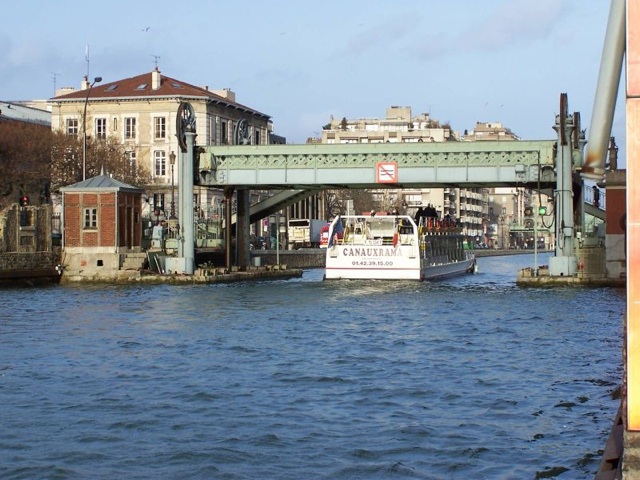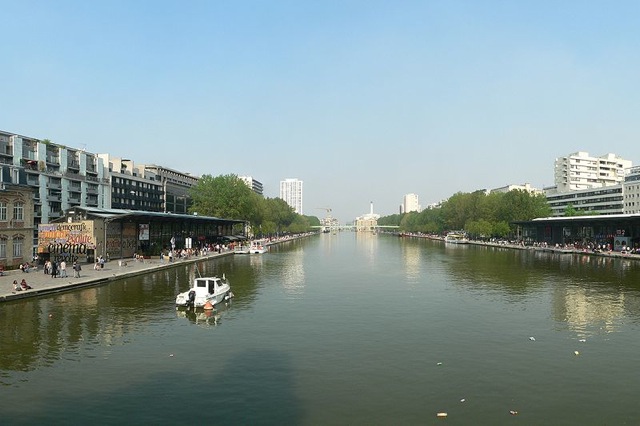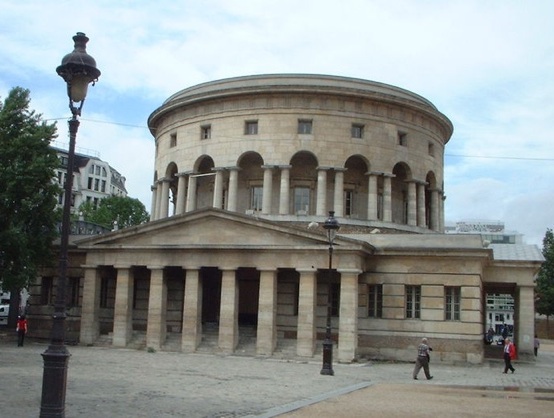

Compared to other major capitals, Paris is rather a small city. Although it has extended suburbs, these are not administratively part of Paris itself. If one follows the evolution of the city over the centuries (one pleasurable way to do so is to read Paris: the Secret History, by Andrew Hussey ,Penguin 2007, which is both informative and entertaining) it is clear that there have been a succession of limits to Paris, often protected for tax purposes. Settlements that were established beyond these limits were included at a later date, and the boundary extended outwards. This process came to a halt in the 1960’s when the Paris ring road (the “périphérique”) was constructed. This now more or less defines the outer limits of the city: very characteristic signs mark the point at which you leave Paris and enter a suburb – a former village or commune – and vice versa. The fact that Paris has a distinct architectural style, and the suburbs another, often reinforces this sense of transition.
As I explained in an earlier letter (March 2008), Paris consists of 20 arrondissements (each in turn divided into four “quartiers” – which explains the word), and these together form a unitary authority. Since the Right lost control of Paris and seems to have little chance of regaining it for some time there are subtle but definite moves on the part of the central government to create a “greater Paris” including suburbs, which would have more chance of being taken by the Right. Even if this does come about however, the divisions will not disappear. The current distinction of Paris from its suburbs is clear from the transport system: Paris is served by the Metro, the suburbs by the RER. The two systems interact at certain points, finance of both is orchestrated at a regional level and there is a unified ticket system, but symbolically the difference is clear and will persist.
A small city it remains therefore, but none the less tourists often restrict themselves to very limited areas, which is a pity, because “off the beaten track” there are many delights to be appreciated. I will write about some of these in subsequent letters, but this month I would like to mention the Bassin de la Villette, which happens to be near where I live, but more importantly celebrates its bicentenary this year with a number of events.
Canal St. Martin looking towards La Rotunde

The Bassin de la Villette is a wide stretch of water between the point at which two important canals (the canal de l’Ourcq and the canal Saint Martin) converge and the former customs house (itself a remarkable construction by the neo-classical architect Claude Nicolas Ledoux).

This masterpiece has been scandalously neglected for decades but is currently being restored. The Bassin is a place where boats and barges can be moored, but there are two large cinemas on each side, as well as attractive cafés and restaurants. (Fortunately, President Pompidou’s plan to cover it and make a big road into Paris was never realized.) Beyond the customs house a series of locks, and an impressive tunnel under the Place de la Bastille, leads finally to the river Seine. There are a number of pleasure cruises available, which are well worth investigating in the warmer months of the year. (Lovers of classic French cinema will appreciate the scene of Marcel Carné’s “Hôtel du Nord”, and feel a link with Jean Vigo’s wonderful “L’Atalante”). Using a map, it is not too difficult to wander beside the canal at various points: such walks will provide another, less familiar, view of a great city. Just writing about it makes me long for warmer weather.
Post Script November 2011
Having been the haunt of tramps and addicts, this place has now opened as a restaurant and café. It is well worth visiting, because at last you can go inside and admire the wonderful roof with its circular cupola window. The restaurant is not above average, and at 35€ not cheap, but you can get a good impression of the interior from the bar. The only quibble I have is that the lighting, which is rather brash, but anyone visiting Paris should go to this area, which is now animated and interesting. There are other bars with a view of the basin de la Villette, (Letter from Paris February/March 2009)two cinemas on either side of the water, and some interesting barges which have concert spaces inside. You can walk without being deafened by traffic, and have a look at the splendid bridge of la rue de Crimée (built in 1885) which lifts up to allow boats to pass through.)two cinemas on either side of the water, and some interesting barges which have concert spaces inside. You can walk without being deafened by traffic, and have a look at the splendid bridge of la rue de Crimée (built in 1885) which lifts up to allow boats to pass through.)two cinemas on either side of the water, and some interesting barges which have concert spaces inside. You can walk without being deafened by traffic, and have a look at the splendid bridge of la rue de Crimée (built in 1885) which lifts up to allow boats to pass through.
Julian Arloff